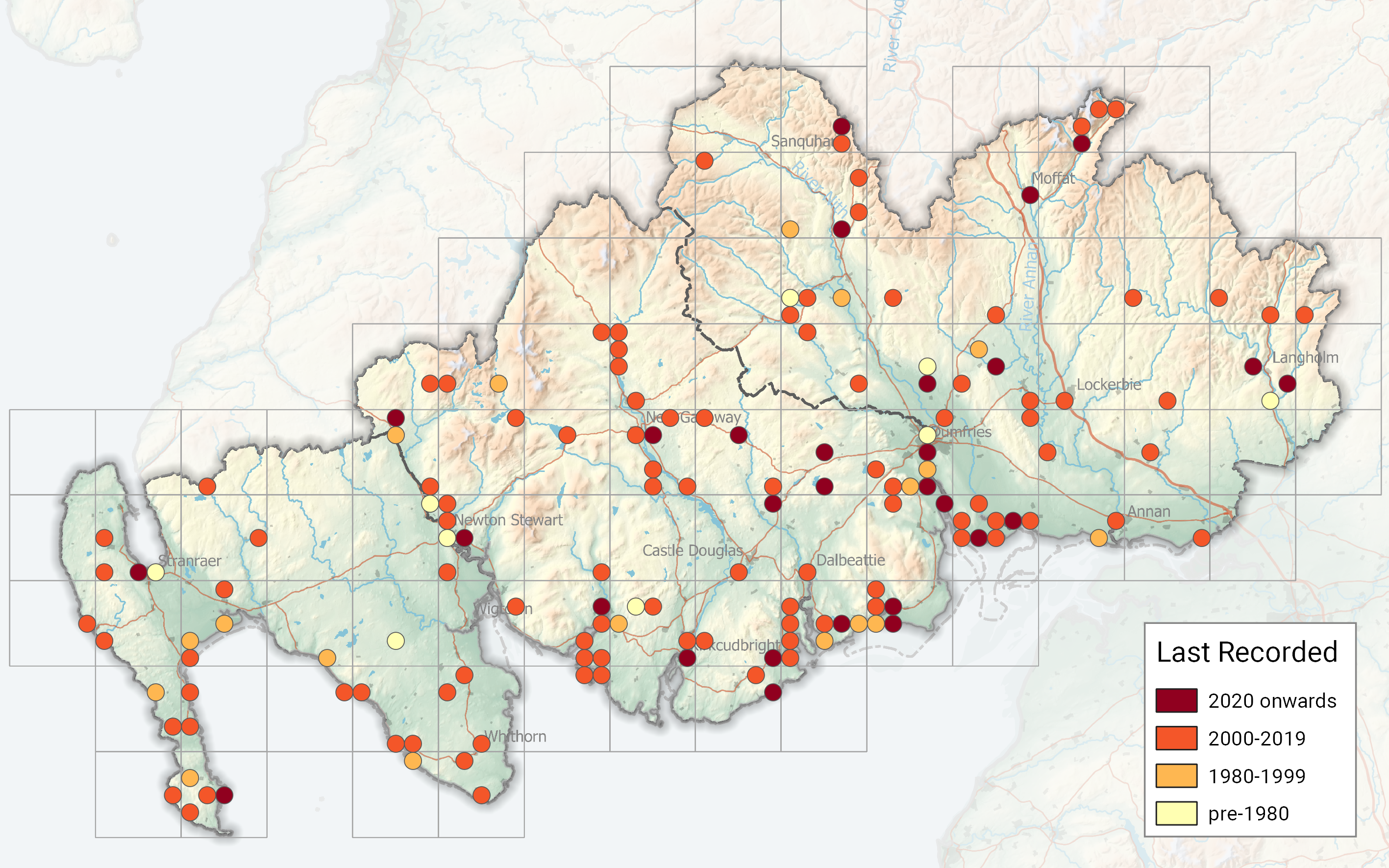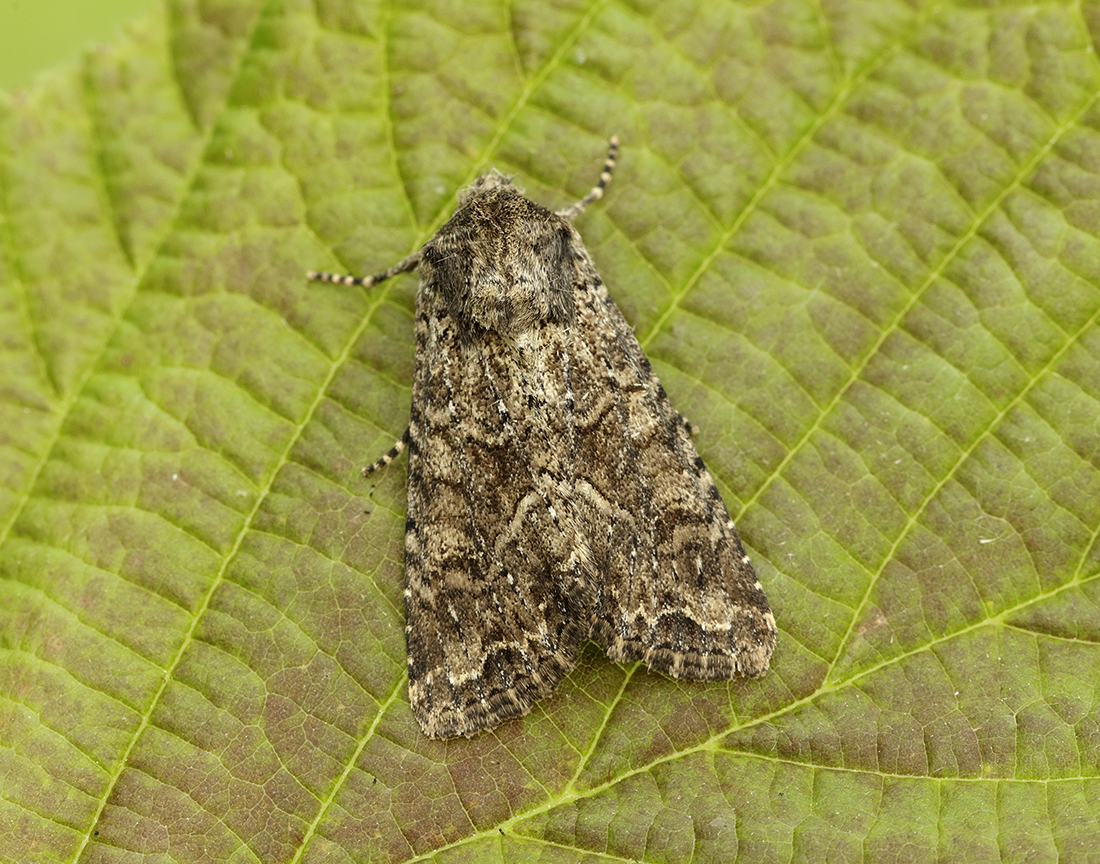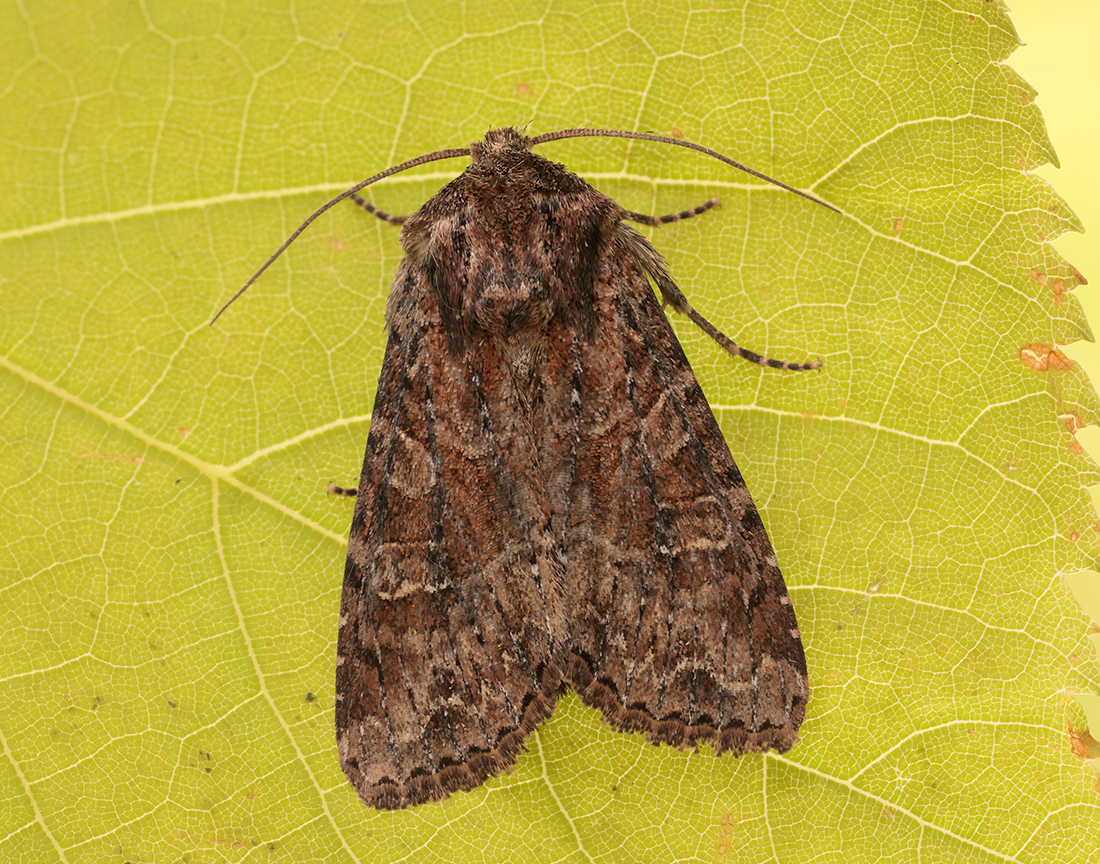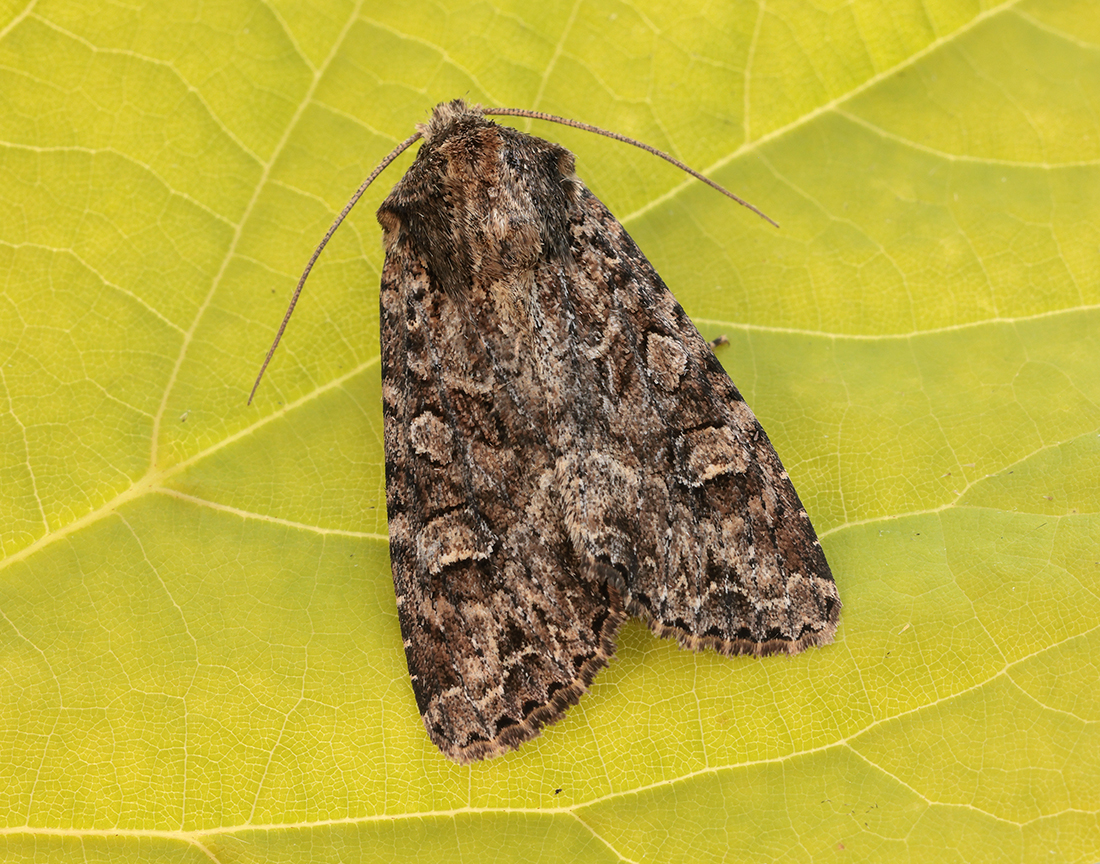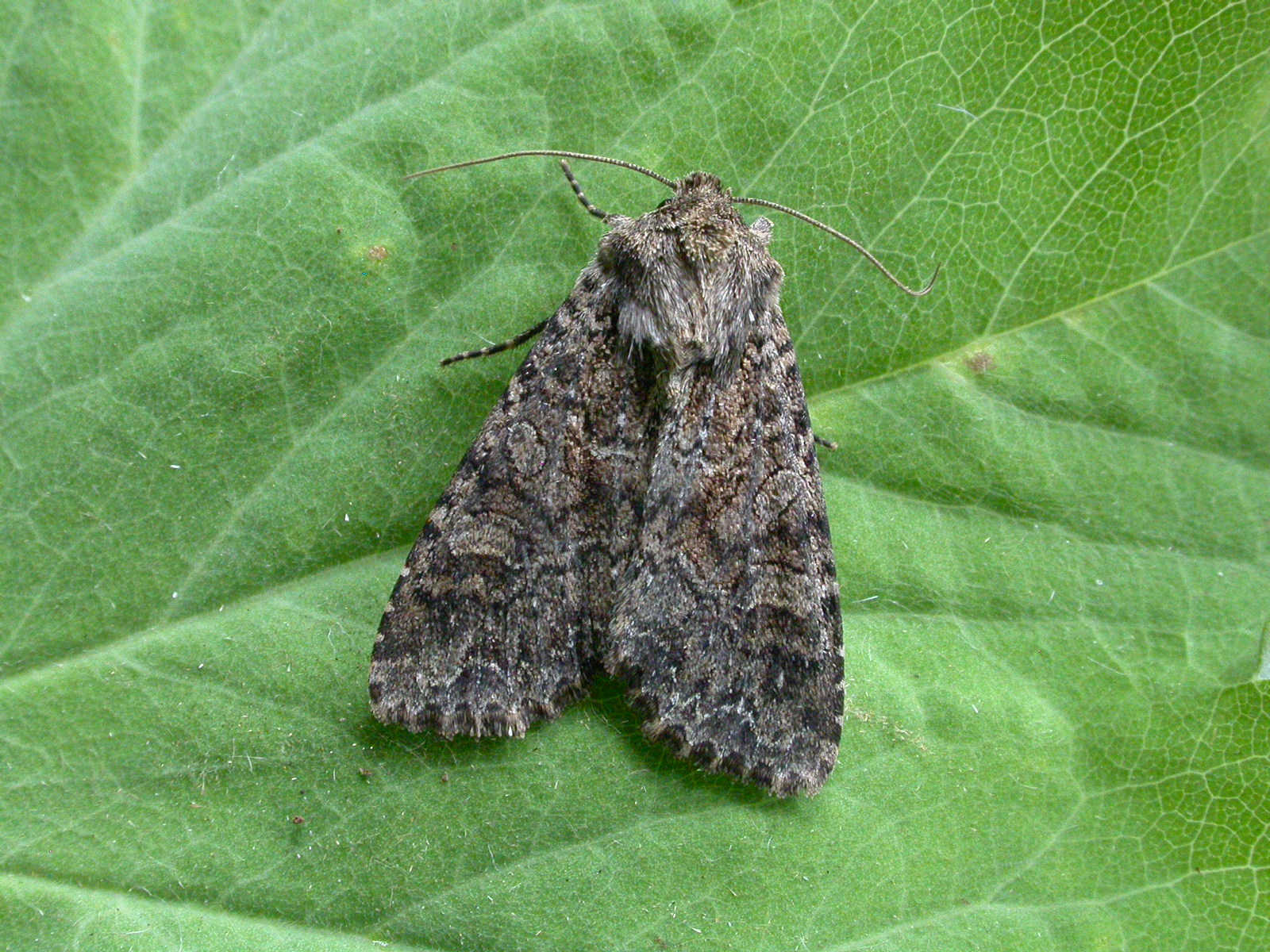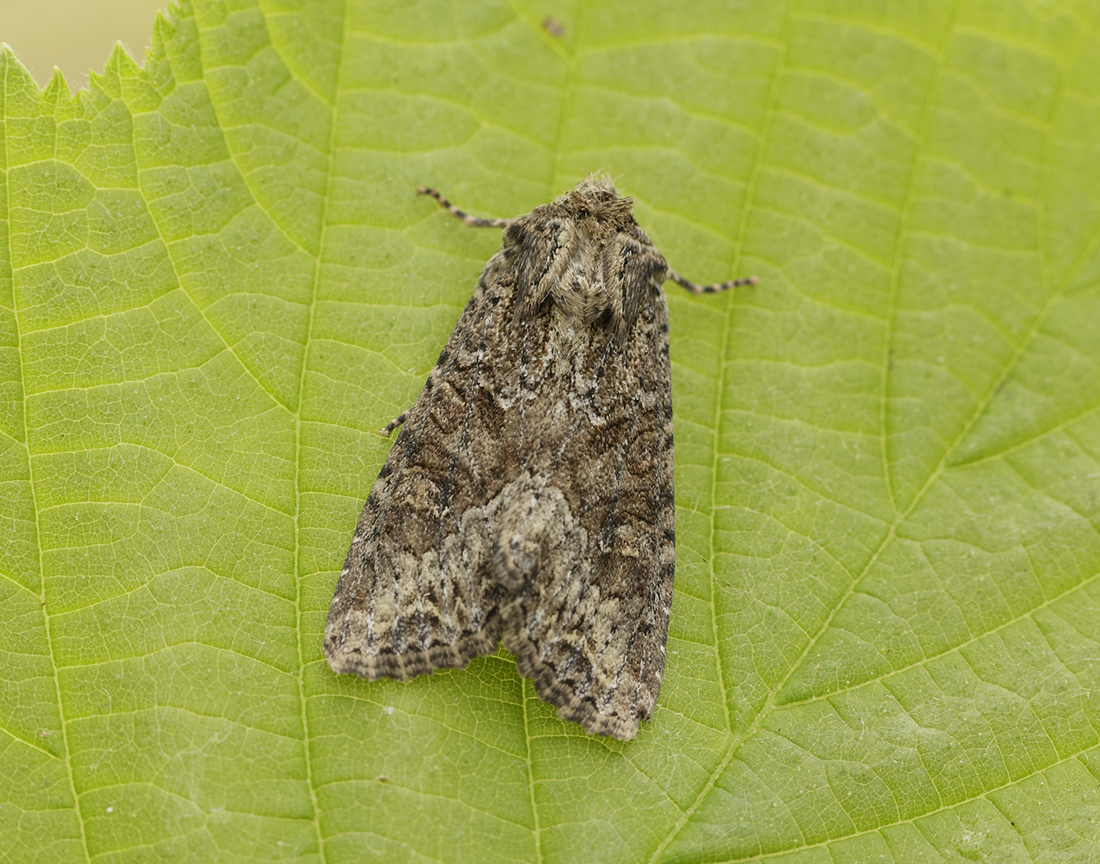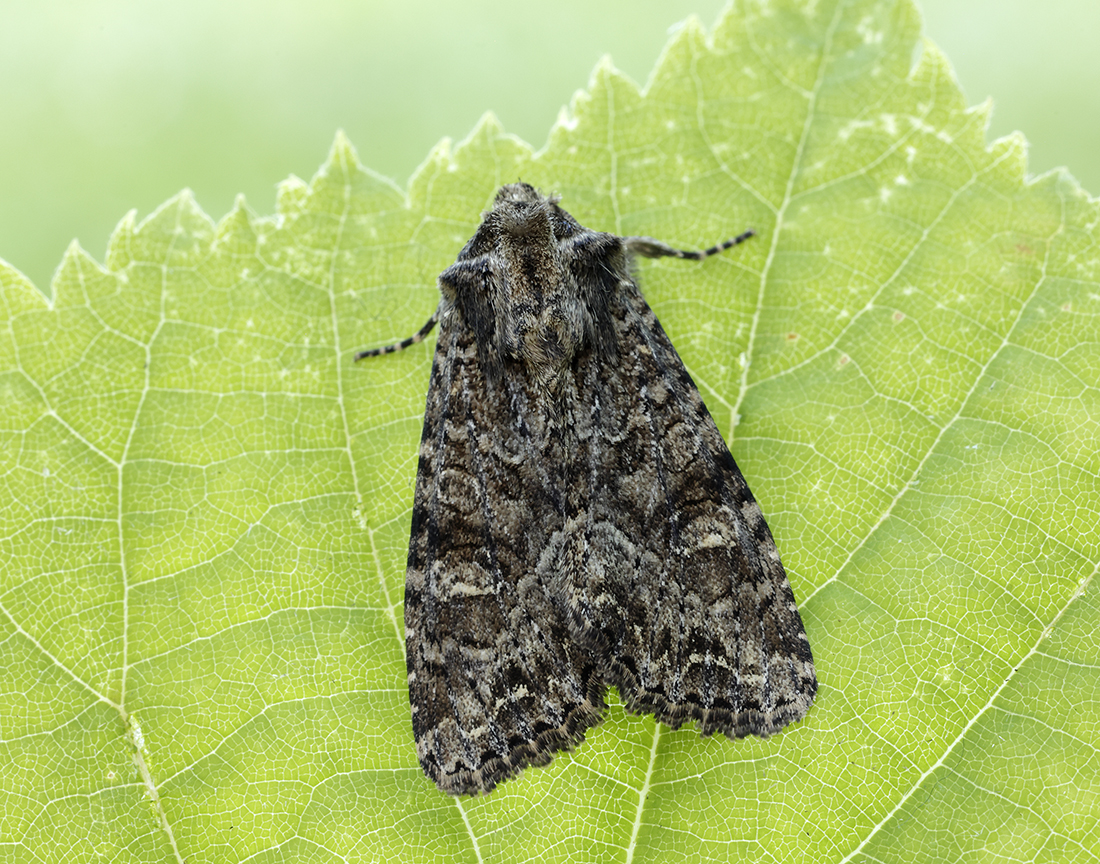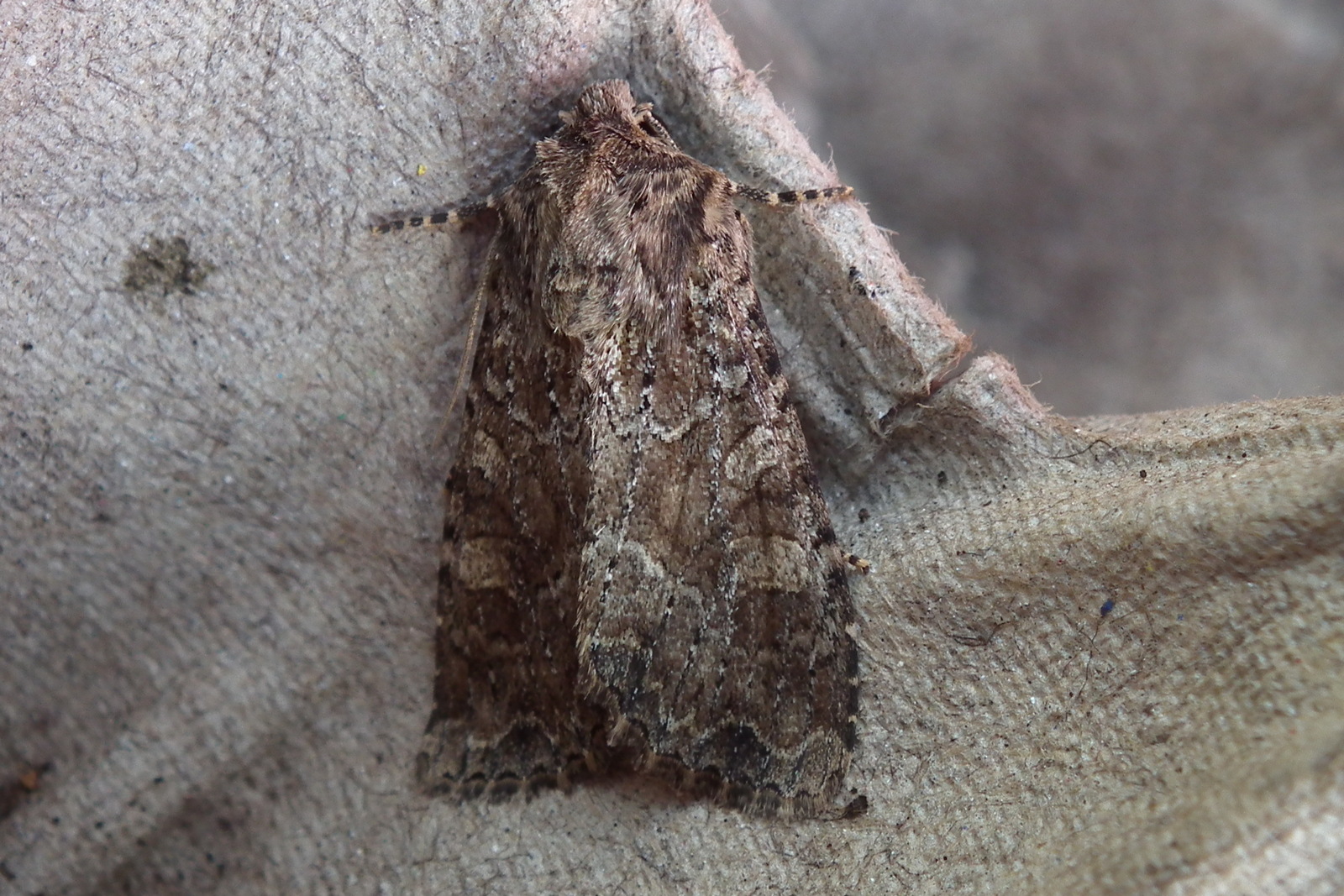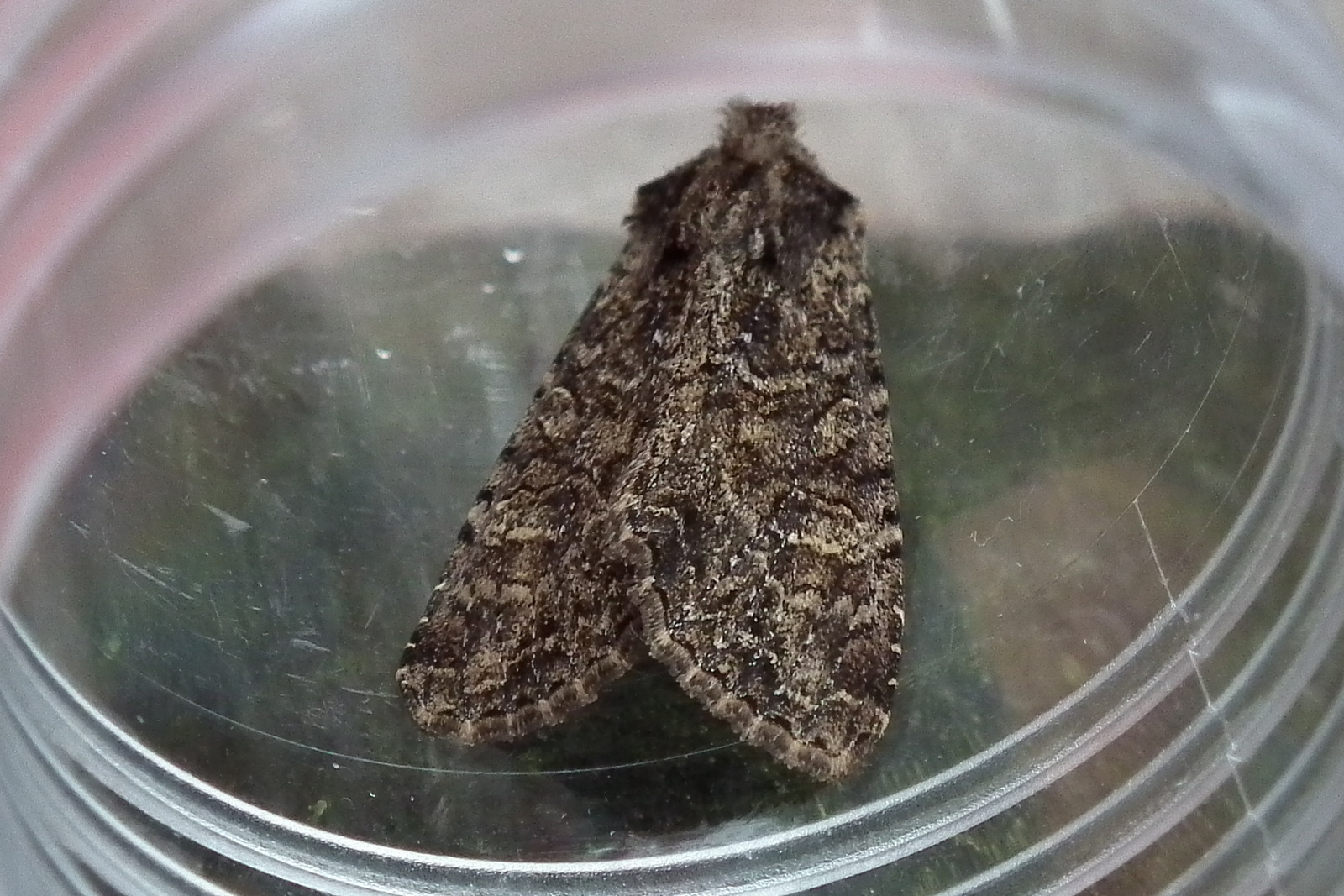Identification
Very variable and a trap for the unwary, being confused with many other noctuids, especially later on in August. The black basal streaks and the paler oval and kidney marks compared to the forewing colour should help identification.
Recording Method.
Attracted to light, also comes to sugar and flowers.
Life cycle
One generation. Overwinters as a larva during August to April, close to the ground where it hides by day and feeds by night. Pupation takes place underground.
Larval foodplants
Grasses, including Common Couch and Reed Canary-grass.
Habitat
A wide variety of grassy sites.
History
Lennon (1863) stated that it was common everywhere around the Dumfries area. K. J. Morton of Edinburgh (1900) whilst on a visit in July 1899 to Wigtownshire had found this species in the Monreith area. Gordon (1913) found it abundant and generally distributed in Wigtownshire. On 23rd June 1906 there were thousands on raspberry flowers in his garden at Corsemalzie (VC74) and very variable. Earliest date was 12th June 1897.
Sir Arthur Duncan (1909-84) during his lifetime had found it at Closeburn, Tynron and Castlehill, Dumfries (all VC72). Archibald Russell (1944) listed it as occurring near Gatehouse of Fleet (VC73) during the years 1942-43.
Five of the seven Rothamsted stations recorded it moderately during 1974-89, with Caerlaverock and Bridge of Dee being the unrecorded sites.
With regular trapping during 1992-2010, Kirkton and Durisdeer provided most records, but there are a number of records from widespread sites across the region, proving it to be one of our commonest noctuids.

